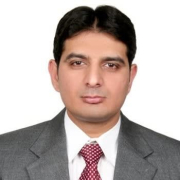


Checkmarx One and Microsoft Defender for Cloud compete in the security software market. Based on the features and integrations, Checkmarx One seems to have the upper hand in code analysis, while Microsoft Defender for Cloud excels in security insights and Azure integration.
Features: Checkmarx One offers advanced code analysis identifying vulnerabilities without code compilation, integrates with Jenkins, and supports multiple programming languages, enhancing developers' versatility. Microsoft Defender for Cloud excels in providing superior security insights, seamless Azure integration, and comprehensive monitoring across hybrid environments, making it appealing for businesses within Microsoft's ecosystem.
Room for Improvement: Checkmarx One needs to address false positives, broaden language support, and improve user documentation. Microsoft Defender for Cloud could be more user-friendly by simplifying its complexity, providing more detailed recommendations, and improving real-time alerting effectiveness.
Ease of Deployment and Customer Service: Checkmarx One is commonly used in on-premises environments and is complemented by knowledgeable technical support, though delays are occasional. Microsoft Defender primarily thrives in hybrid and public cloud environments, with high-rated support despite noted setup complexity.
Pricing and ROI: Checkmarx One is perceived as expensive, but its secure code development capabilities justify the cost, though its flexible licensing model can be complex. Microsoft Defender for Cloud provides a predictable pricing model attractive to organizations using multiple Microsoft products, yet the cost can escalate for large-scale deployments.
| Product | Market Share (%) |
|---|---|
| Microsoft Defender for Cloud | 5.3% |
| Zafran Security | 1.1% |
| Checkmarx One | 0.9% |
| Other | 92.7% |



| Company Size | Count |
|---|---|
| Small Business | 30 |
| Midsize Enterprise | 9 |
| Large Enterprise | 38 |
| Company Size | Count |
|---|---|
| Small Business | 26 |
| Midsize Enterprise | 7 |
| Large Enterprise | 45 |
Zafran Security integrates with existing security tools to identify and mitigate vulnerabilities effectively, proving that most critical vulnerabilities are not exploitable, optimizing threat management.
Zafran Security introduces an innovative operating model for managing security threats and vulnerabilities. By leveraging the threat exposure management platform, it pinpoints and prioritizes exploitable vulnerabilities, reducing risk through immediate remediation. This platform enhances your hybrid cloud security by normalizing vulnerability signals and integrating specific IT context data, such as CVE runtime presence and internet asset reachability, into its analysis. No longer reliant on patch windows, Zafran Security allows you to manage risks actively.
What are the key features of Zafran Security?
What benefits can users expect from Zafran Security?
In industries where security is paramount, such as finance and healthcare, Zafran Security provides invaluable protection by ensuring that only exploitable vulnerabilities are addressed. It allows entities to maintain robust security measures while allocating resources efficiently, fitting seamlessly into existing security strategies.
Checkmarx One is an enterprise cloud-native application security platform focused on providing cross-tool, correlated results to help AppSec and developer teams prioritize where to focus time and resources.
Checkmarx One offers comprehensive application scanning across the SDLC:
Checkmarx One provides everything you need to secure application development from the first line of code through deployment and runtime in the cloud. With an ever-evolving set of AppSec engines, correlation and prioritization features, and AI capabilities, Checkmarx One helps consolidate expanding lists of AppSec tools and make better sense of results. Its capabilities are designed to provide an improved developer experience to build trust with development teams and ensure the success of your AppSec program investment.
Microsoft Defender for Cloud is a comprehensive security solution that provides advanced threat protection for cloud workloads. It offers real-time visibility into the security posture of cloud environments, enabling organizations to quickly identify and respond to potential threats. With its advanced machine learning capabilities, Microsoft Defender for Cloud can detect and block sophisticated attacks, including zero-day exploits and fileless malware.
The solution also provides automated remediation capabilities, allowing security teams to quickly and easily respond to security incidents. With Microsoft Defender for Cloud, organizations can ensure the security and compliance of their cloud workloads, while reducing the burden on their security teams.
We monitor all Vulnerability Management reviews to prevent fraudulent reviews and keep review quality high. We do not post reviews by company employees or direct competitors. We validate each review for authenticity via cross-reference with LinkedIn, and personal follow-up with the reviewer when necessary.